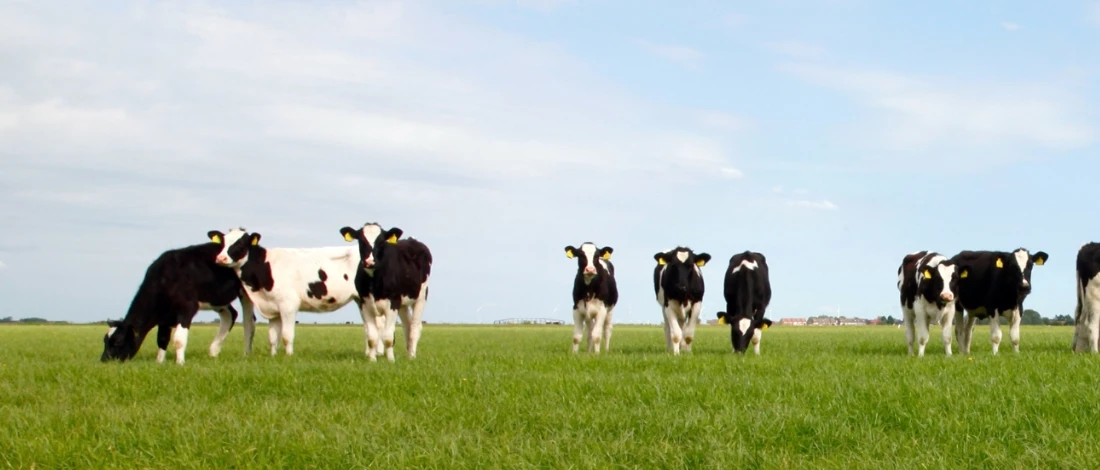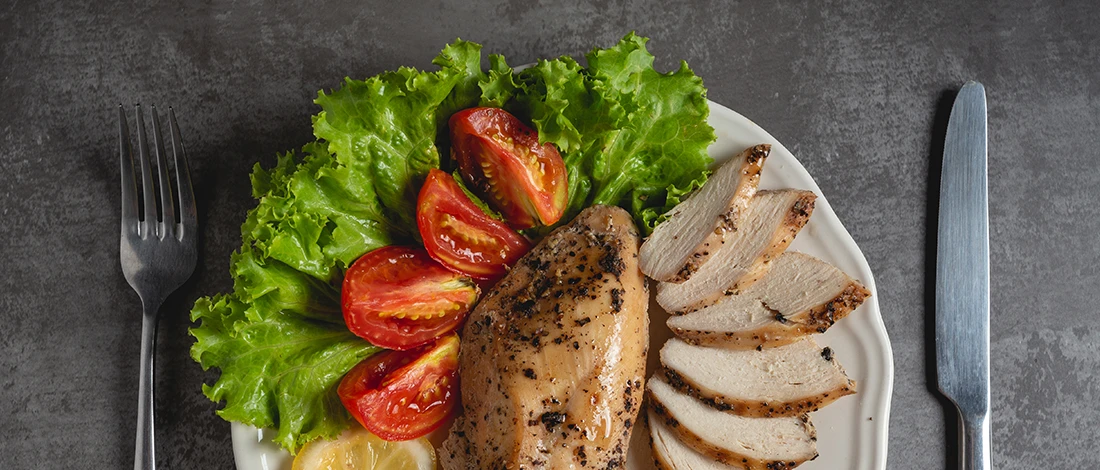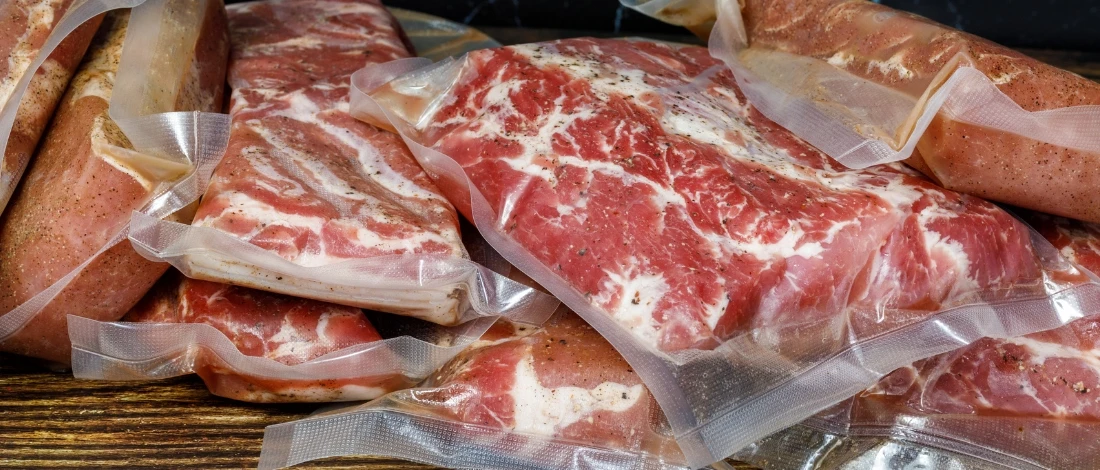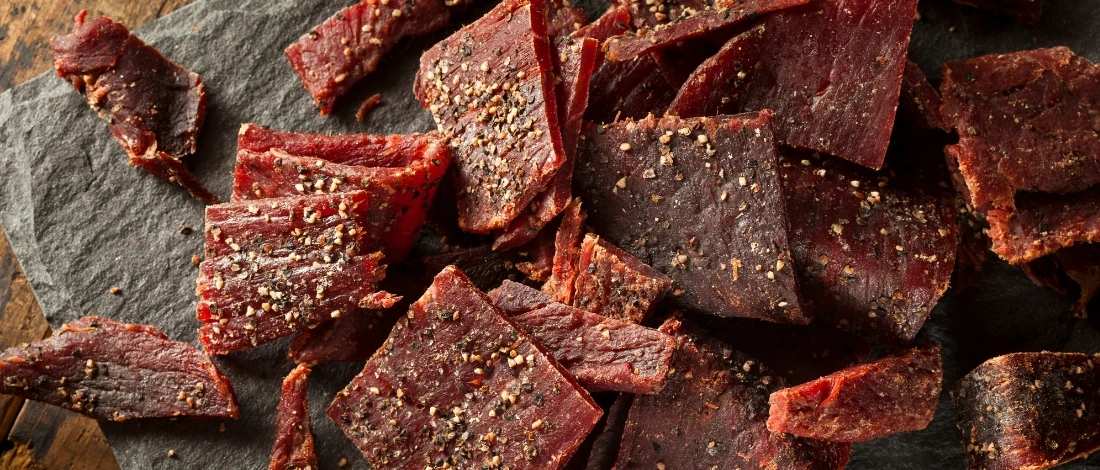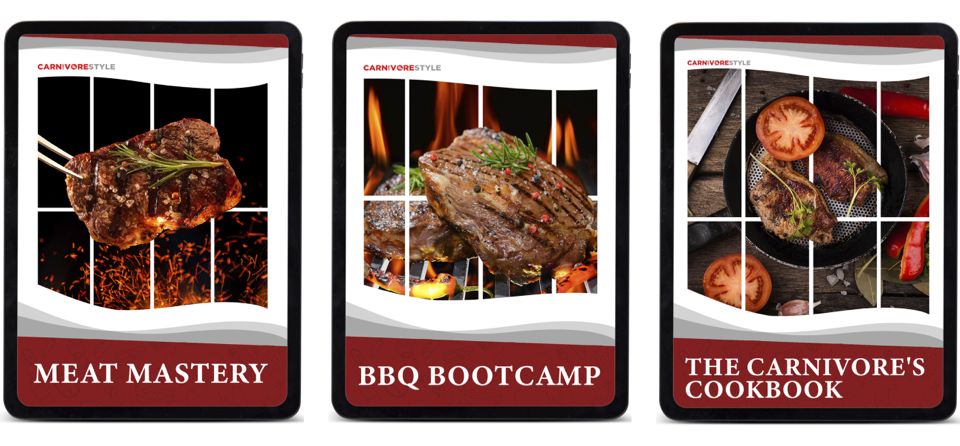If you are reading this blog, I’m sure that one of your main questions is how to start a carnivore diet in a healthy and efficient way. This popular diet can help you lose weight and improve your health. For example, if you are suffering from anemia (iron deficiency) you must eat a lot of meat.
Still starting a new diet is a serious process that can backfire if you are not doing it correctly. That is why is best to follow the advice of specialists, nutritionists, and dieticians that have experienced the carnivore diet first hand and are confident to recommend it to others.
As the Carnivore Style’s team, we reached out to 20 carnivore aficionados, doctors, health coaches and asked them the following question:
What are your top three tips on how to start the carnivore diet?
Here are some top tips on how to start the carnivore diet, as shared by various experts and individuals experienced with the diet. Enjoy!
Dr. Shawn Baker
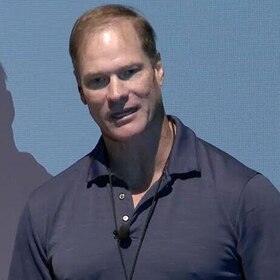
1. Switch to a carnivore diet you love, eating until full. This can include a mix of red meat, fish, dairy, pork, chicken, and spices. Remember, skimping on food can lead to intense cravings and derail your diet.
2. Eat a carnivore diet for your well-being, not for others. Don’t feel the need to justify your food choices. Critics won’t be around to help if your health declines in the future.
3. Understand that nutrition science can’t predict our lifespan or cause of death. Instead, aim to transition from illness to wellness. Focus on improving your healthspan, as lifespan remains a mystery.
Related: The Carnivore Diet Book Review by Shawn Baker
Scott Myslinski – Carnivore Cast

Here would be my top three tips for starting a carnivore diet:
1. Commit to trying the carnivore diet food list for at least 30 days, ideally 60-90, to see meaningful changes in the way you feel, look and perform.
2. Eat as much and as often as you want. Don’t go into the carnivore diet expecting to lose weight right away. If you do that and deprive yourself, you won’t adapt to eating only meat and you’re much more likely to give in to cravings and fail.
3. Prioritize fatty meats but indulge in your favorites. Skip the strict rules on spices or bacon initially. Seasoned carnivores might push for just beef and salt, or insist on organ meats, but your focus should be on making the diet doable long-term. As you dive into the carnivore diet, it’s okay to sprinkle in some garlic powder, pepper, or a touch of dairy—moderation is key!
Focus on the cuts of meat you find the most delicious and don’t worry about organs at the start (you won’t develop any nutrient deficiencies in 90 days and many 10 years + carnivores don’t eat organs at all). You can always adjust the carnivore diet later as you get traction, but if you’re still concerned you can check out some carnivore friendly supplements.
Craig Emmerich – Keto Adapted

1. First, pinpoint your “Why” for starting a carnivore diet—it shapes your approach. Aim for general health and weight loss? Chow down on anything animal-based. Battling chronic diseases? Treat it as an elimination diet—start with beef and salt, then gradually introduce other proteins to see what jives with your body.
2. Next, let’s talk digestion. Shifting to more animal proteins might ruffle your digestive system’s feathers, leading to constipation or diarrhea. Constipated? Sprinkle in some salt and magnesium. Diarrhea? Bring in HCL and digestive enzymes till your body finds its groove.
3. Lastly, rest easy knowing a carnivore diet’s got your nutrient needs covered. Our Carnivore Cookbook’s chart is your trusty guide.
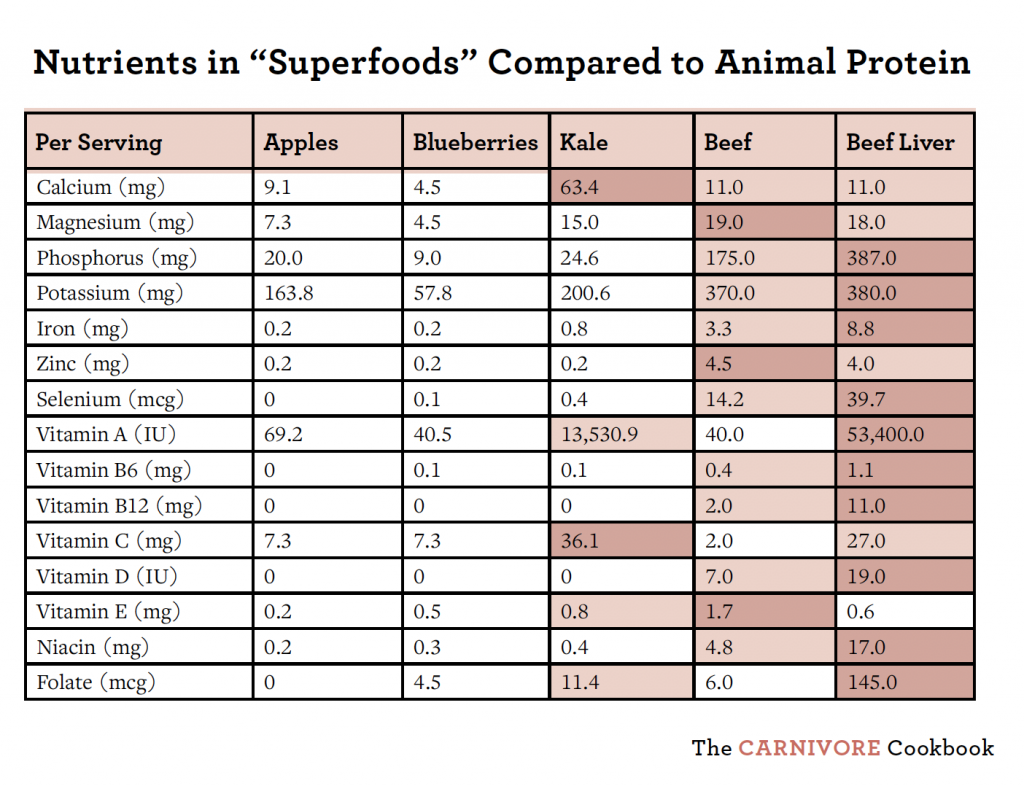
As you can see you get more nutrients (and more bioavailable nutrients) from beef than from any “superfood” like kale or blueberries. And if you want to know what is the real superfood, that is beef liver. It is more nutrient-dense than any food out there.
Melody and Steve Barrons – The Tactical Kitchen

Kicking off the Carnivore Diet is straightforward. Just start with animal protein at every meal. Key tips include managing electrolyte balance, aiding digestion, and ditching stress.
1. Add unprocessed salt daily to stay hydrated, especially since cutting carbs leads to water loss, which can zap your energy. This salt helps rebalance minerals and boosts vitality during the carb detox.
2. For those with weak digestion, we suggest digestive enzymes. Poor digestion often stems from low stomach acid, affecting protein breakdown.
3. Our top advice? Don’t sweat the small stuff! Slipped up? No worries, just hop back on the wagon with your next meal.
Remember, this isn’t a strict doctrine, and there’s no diet police. Expect an adjustment phase. Stress messes with digestion, and smooth digestion is crucial. So, focus on meat, keep calm, and carry on. Your next meal is a fresh start to realign with your plan.
Libby Jenkinson – Ditch The Carbs

My top three tips for starting a carnivore diet:
1. Understand WHY you want to live carnivore.
Carnivore is the ultimate elimination diet and is the next step for many people living keto but they possibly didn’t see the final few health benefits they were hoping for. Maybe you want to settle any lingering gastrointestinal issue, maybe you want to lose those final last few kg/lb, and maybe, you want to experience the amazing health benefits you keep hearing about in carnivore circles. Whatever your reason is, understanding your “why” will help keep you on track.
2. Decide how hardcore carnivore you want to be. Are you able to be strictly 100% carnivore with just meat, salt, and water? Will you want to keep some high-fat dairy in your day so you can still enjoy creamy coffees and cheese? Or will you allow a sprinkling of vegetables in your day for example when frying up your liver and onions? Make this carnivore diet sustainable for you.
3. Don’t underestimate the slight awkwardness of social situations. Be prepared to answer and enlighten those around you that still think a bowl of kale is healthier than a juice fat steak. By encouraging and answering questions might just encourage friends and family to try your carnivore diet too.
Mike Senina – Meat RX

My top three tips on how to start a carnivore diet:
1. Eating to satiety. It’s critical to eat enough animal products for energy to keep cravings at bay, and “refill” your nutrient/mineral tank.
2. As your physiology changes, it is important to view food as fuel rather than for pleasure or “comfort.” The goal is to liberate the control food has on you both physically and psychologically.
3. Biofeedback is key, make note of it, depending on what protocol you’re coming from the adaptations could vary and will take time as the body is healing. Be patient and consistent!
Tommy Vekhayn

Starting the carnivore diet sounds really hard, but it’s actually super easy and fun.
Here are my three tips to start a carnivore diet:
1. Slowly transition from your current diet to the carnivore diet. Don’t just declare, “Tomorrow, it’s only meat for me” – that’s not the way. Gradually up your meat intake and cut back on pasta and bread. This eases you into the carnivore diet. You’ll soon find you’re less peckish and in a sunnier mood, just hours after making the switch.
2. Spice up your food, literally. Folks often stock up on grilled chicken and steak for a carnivore diet, only to find the taste too bland.
Before hitting the store, grab some budget-friendly meat seasonings. I usually snag any salt meant for grilled chicken or steak. A little sprinkle works wonders, boosting flavor without dinging your health.
3. It’s okay to have a cheat meal here and there. Sometimes the carnivore diet food list can limit a lot of your food. It’s okay to have a cheat meal here and there. Don’t do it every day, but maybe set a day once a week where you can have your favorite candy or bowl of ice cream. It’s important to keep you on track!
Clint and Aimee – Primal Influence

Our tips for how to start on carnivore diet:
1. Do your research to fully understand what carnivore diet is, how it can be beneficial and how to do it right. A good place to start is the Dr Paul Saladino podcast and his social media platforms. Brilliant info and he promotes nose-to-tail eating which we’re big fans of.
Related Article: The Carnivore Code by Paul Saladino (Book Review)
2. Initially, don’t sweat the quality of eggs, meat, and fat—just start with the best you can afford. While ideal, local biodynamic products can be pricey and overwhelming. Begin with what’s in your budget, then gradually upgrade as you adapt to this diet, especially after the ‘hungry month.’
3. Log your journey in a diary. Note your meals, moods, stress, symptom shifts, and activity levels. It’s a game-changer for understanding how your diet and lifestyle choices affect your health, helping you tweak things as needed.
Gary Kirwan – BioHackers Lab

1. Try to eat meat that has a good amount of fat as it can be cheaper to buy from your butcher, will make the meat more tasty to eat and help make sure you are getting healthy fats along with the protein.
2. Eat until feeling full each day.
3. Let meat like steak rest for a short period after cooking to get the best taste.
Nick Eggleton – Gene Life

My top 3 tips on how to start a carnivore diet are
1. Find a local farm that raises it’s animal well and feeds them properly (naturally) so you can buy in bulk. Preferably pasture-fed, organic. We buy half an animal at a time.
2. Use the whole animal, nose-tail. Make bone broth from bones, pate from liver, and slow-cooked joints (short ribs, cheeks, shanks, neck), not just the steak cuts. Not only is bone broth more nutritious, but it’s also more affordable and gives more variety.
3. Get a dehydrator – you can make jerky quickly and easily for travel snacks.
Anju Mobin – Best of Nutrition
Are you planning to start a carnivore diet or also know as the all-meat diet? Here are the top three tips that you will need to get started.
1. Start with 30-day meat only challenge. For those who are want to do the carnivore diet, a 1-month challenge is a great start. Within 30 days, you will follow the recommended rules and tips for a carnivore diet. And from them, you must observe changes in your body. Take pictures, create health diaries, and keep track of the different results so you will know if this is the right carnivore diet plan for you.
2. Eat only meat. Since the carnivore diet is an all-meat diet, this means that you will only eat 100% meat at all times. You are not allowed to eat a little number of fruits or vegetables while you are on a carnivore diet.
3. Drink only water. If you want to stick with a strict carnivore diet food list, it is recommended that you only drink water. For some people, drinking water alone is important for the first 30 days of their carnivore diet. The carnivore diet plan is more effective in this way. But if you want to add some coffee or tea to your carnivore diet, you may do so as long as you are not adding sugar or any sweeteners to your hot drinks.
These tips are very important if you want to know whether the carnivore diet plan is for you. Strictly follow every instruction and see the results after 30 days.
Christo Zeelie – Healthopolitan.com

1. When starting a carnivore diet, opt for fatty meats like ribeye, T-bone, and New York strips. Your body will adapt, using meat for energy instead of carbs. Stick to spices, avoiding sauces and rubs. Manufacturers might add hidden carbs, so always check the nutritional info for 0 carbs to stay on track.
2. It does not help to count the calories. Thanks to Google, the carnivore diet’s a hot trend, complete with apple cider vinegar and the MyFitnessPal app. Meat’s fat content keeps you full, cutting down your daily intake. It’s weight loss 101: burn more calories than you consume.
So, eat your fill when hungry and forget calorie counting. Proteins, crucial for making enzymes, hormones, and repairing tissues, are abundant in meat. That’s right, meat’s the ticket!
3. Shopping for meat? It’s simpler than other diets, but top-notch meat can hit your wallet hard. A bit of digging shows you don’t need the priciest cuts for a carnivore diet. Scout for deals on meat, eggs, and cheese. You’ll pocket some savings without compromising the diet’s benefits.
Bonus tip: Shake up your carnivore menu with a variety of meaty snacks. Tired of the same old bacon breakfast? (Never thought I’d say that!) Spice it up with salami, beef or turkey jerky, bacon rolls, crab, or even sushi. It’s all carnivore-approved. Especially during the initial days, these snacks can add some excitement to your routine.
Remember, focus on fatty meats for essential proteins and forget about counting calories – they’re not on the carnivore’s radar. You can do the carnivore diet on a budget. Try mixing it up with different snacks when you are struggling.
Jessica Haggard – Primal Edge Health

Here are my three top carnivore diet tips: First, stock up on fatty meats. Second, red meat beats all. Third, eat till you’re full.
1. Fancy cuts like ribeye are pricey. Opt for cheaper fatty options like 75% lean ground beef or brisket. They’re filling and energize you more than lean meats.
2. Prefer red meat from animals like beef or lamb over chicken or pork. They pack more quality fat and are generally easier to digest.
3. Lastly, don’t sweat the portions. Eat when hungry, stop when full. Maybe you’ll need just two meals a day, especially if you’re shedding weight. Get used to fatty meats and listen to your body’s hunger signals.
Joel Flynn – Gentleman Guide

The Carnivore diet, a true manhood quest, demands fitness. Starting can be tough but it’s doable. Here are my no-nonsense tips:
1. Hydrate primarily with water, but coconut water, tea, and club soda are good swaps.
2. When cooking meat, experiment with seasonings like cumin, curry, mustard powder, and Cayenne pepper to mix things up. Dodge sauces; they’re sugar and calorie traps.
3. In my book, sausages don’t make the carnivore cut.
Emma Williams – Easy Recipe Depot

Starting the carnivore diet means changing the way you fuel your body. Going from eating carbohydrates every day to zero carbs is hard, but it will mean you become a fat-burning machine and gain strength too. Here are our top three tips on how to ensure you start a carnivore diet successfully:
1. While the carnivore diet food list is limited to meat, eggs, butter, and cheese, you are allowed spices and seasonings. Experiment with different meats, spice,s and flavors to keep your diet exciting, but always check the packet first as many seasonings can be full of added sugar.
2. Magnesium will help. Making the change from a standard carb-heavy diet to the carnivore diet may leave you feeling lethargic for the first week or so. If you find this is true for you, take some natural electrolytes such as potassium and magnesium. The magnesium will also help with muscle aches if you feel a little sore.
3. Don’t cheat! You may be used to having a little bit of sugar here and there, or a cheat day on the weekend, but with the carnivore diet this is off-limits. To ensure you don’t fail at the first hurdle, do a big supermarket shop and stock up on meat as well as meaty snacks to keep you satisfied throughout the day. Beef jerky (with no added sugar and preservatives) is a great office snack and we also recommend snacking on boiled eggs or cold, pre-cooked 100% pork sausages.
Nicolle Harwood-Nash – The Workout Digest

The carnivore diet trend has increased because too many ketogenic dieters find consuming high fat not a viable practice in the long-term but still want to maintain a high-protein intake. We have to thank Shawn Baker who’s considered the father of the no-carb, all-meat diet. Like most diets, there’s no full guarantee of weight loss when you follow such practice though.
Here are my top three food choices:
1. Red meats have a bad reputation, but they’re totally healthy as part of a well-balanced diet. Contrary to fears, red meats pack crucial nutrients like Iron, Zinc, and Magnesium, tackling common deficiencies with a high-calorie punch. They’re carb-free and, depending on the cut, calorie-rich!
Craving a low-carb, high-calorie fix? Choose fattier meats. Skip the sirloin for a tenderloin or T-bone! And hey, red meat isn’t just beef. Venison and other red meats are a great choice that provides an amazing, versatile cooking experience and delicious results! They’re equally useful for the nutrients found in beef, and they have their own fatty cuts.
2. Salmon and similar fatty fish, packed with nutrients and zero carbs, are top-notch. They’re loaded with three essentials: Vitamin A, an aging and disease-fighting antioxidant; Vitamin D, crucial for brain health, testosterone levels, and inflammation reduction; and Omega-3 Fats, your must-haves for combating inflammation, brain protection, muscle recovery, and overall wellbeing. Your body can’t produce Omega-3s, so chow down on fatty fish, the prime source. Bonus: they mesh well with other high-fat goodies!
3. Eggs, the powerhouse of healthy fats and protein, are top-notch for your health. Remember Rocky? He knew it too! Packed in these tiny shells, the yolk bursts with fats and crucial nutrients like Choline, boosting brain health and muscle function. The whites? They’re your protein fix.
Choline, a star nutrient, is part of Acetylcholine, essential for nerve health and mental sharpness. More choline, better performance – it’s that simple. Eggs are your breakfast champions, pairing perfectly with low-carb mates like avocado or steak. And if you’re chasing calories, try frying them in healthy oils like olive or coconut. It’s a vitamin-packed punch!
Jamie Hickey – Truism Fitness

1. For most people who want to try and start eating a diet of only meat, starting with a 1-month carnivore challenge is a good way to start. For 30 days you will follow the recommended rules of the challenge, and that is all.
Use this time to see if you feel better (better energy, fewer aches, and pains, better sleep, less hunger). Use this time to take before and after pictures and track your results so that you know if this carnivore diet plan is for you or not.
3. Only drink water – sticking to water hinges on your carnivore diet’s strictness. Need electrolytes? Sprinkle in some Redmond Real Salt. Can’t skip your morning brew? Go for it, but keep it black—no cream, milk, or sugar.
Linda Morgan – Motivation in Our Nook

1. Important things to consider when considering the carnivore diet is to make sure you get all the vitamins you will be missing due to your limited diet of only consuming meat. Simply taking a daily multivitamin should be sufficient in ensuring your body doesn’t have any vitamin deficiencies.
2. Your body will be in ketosis, it will be burning fat for fuel, so you’ll have to consume fatty meats in order to have energy to burn. If you only eat lean meats you won’t have any fat for your body to burn. Your carnivore diet won’t have any carbohydrates to burn from fruit, breads, or grains.
Ease into the carnivore diet to avoid shocking your digestive system, which is used to fiber. Gradually swap out carbs and veggies for more meat, rather than diving headfirst into an all-meat diet.
3. Stick to top-notch, grass-fed meat, organic eggs, and premium meat products. Your body thrives on these, not on hormone-packed, corn-fed meat. Trust me, it can tell the difference between prime cuts and those frozen, processed ones.
Joané Hart – The Hart of Health

My top three tips on how to start the carnivore diet eating are:
1. Make sure that you eat enough fat on the carnivore diet, as it will help you feel satiated and also provide your body with the necessary fat for optimal brain health, healthy hormone production, better digestion, etc.
2. Aim to eat the entire animal. You can use it as an opportunity to be creative. Try roasting bone marrow, make bone broth, perfect your steak cooking skills, and finally learn how to poach an egg. And when it comes to organ meats, you could eat them raw if you want, but we had the butcher make us sausages made from liver, beef tallow, and venison.
In South Africa, “skilpaadjies” is a signature dish. A skilpaadjie is minced lamb liver wrapped in fat. You can find recipes for them online and just avoid the spices if you are full carnivore. It is probably one of the best things you will ever taste in your life.
3. Buy from the farmer directly if you can or go hunting. Hitting up a farmer’s market or chatting directly with a farmer often makes snagging grass-fed beef a breeze. You’ll get the scoop on your meat’s origins, ensuring savvy purchases. Plus, nabbing non-liver organ meats and bones is a cinch straight from the source.
If hunting’s your game or you’ve got a buddy for the task, even better. You’ll bag an animal that’s had a taste of the wild life.
Lynell Ross – Ziva Dream

1. The carnivore diet’s strictness makes diving in immediately tough. I recommend a gradual start, easing in over a week or two. Slowly cut back on carbs and sugars to avoid shocking your body. Quitting non-carnivore foods abruptly can trigger physical reactions, possibly discouraging you from the diet. So, ease into it to prevent a premature exit.
2. Clean out your pantry of all foods not allowed under the carnivore diet. If carb-rich and sugary foods linger around your fridge and pantry, they will tempt you and make committing to the carnivore diet even harder than it already is. Do yourself a favor and donate these foods to a shelter, family member or friend.
3. Staying within the strict parameters of the carnivore diet can be tough. It can be even harder when you don’t meal plan and try to stick to the carnivore diet on the fly. That is why I suggest you think ahead with respect to what you will eat at different times and places throughout the week.
Make a carnivore meal plan for the week, meal prep as best you can ahead of time, and stick to it. At Carnivore Style, we also agree that writing down your meal plan and preparing snacks and meals ahead of time will greatly increase your odds of successfully sticking with the carnivore diet.
Thank you so much to all the experts that contributed to this expert roundup!
If you enjoyed reading this expert roundup then please share this post with your friends and followers on social media.


